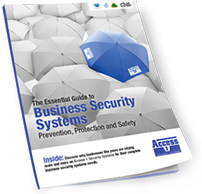What’s the Difference Between Surveillance Cameras and Security Cameras?
Ever wondered if surveillance cameras and security cameras are the same? While they might seem interchangeable, they serve distinct purposes in enhancing safety and monitoring. Understanding their differences is crucial for choosing the right system for your home, office, or business. Let’s dive into the specifics!
Defining Surveillance Cameras
What Are Surveillance Cameras?
Surveillance cameras are designed primarily for monitoring and recording activities over a period. They are often used to observe and document events in various settings, such as public areas, businesses, or industrial sites.
Primary Purpose and Functionality
These cameras are excellent for keeping an eye on large spaces. Their main goal is to provide a record of events for later review, ensuring accountability and detailed observation.
Common Types of Surveillance Cameras
- CCTV Cameras: Used for local monitoring.
- IP Cameras: Internet-enabled for remote viewing.
- PTZ Cameras: Allow pan, tilt, and zoom functionalities for broader coverage.
Defining Security Cameras
What Are Security Cameras?
Security cameras focus on preventing unauthorized activities and ensuring safety. They are often connected to alarms or security systems for immediate response to potential threats.
Key Functions and Objectives
These cameras are designed to actively deter criminal activity. By alerting security personnel or law enforcement, they provide an additional layer of protection.
Common Types of Security Cameras
- Dome Cameras: Discreet and vandal-resistant.
- Bullet Cameras: Highly visible deterrents.
- Motion-Activated Cameras: Record only when movement is detected.
Key Differences Between Surveillance and Security Cameras
Purpose and Use Cases
Surveillance cameras monitor activities, while security cameras actively deter and respond to threats.
Placement and Coverage
Surveillance cameras are often placed in high, wide-view areas, while security cameras are installed near entry points or vulnerable zones.
Recording and Real-Time Monitoring
Surveillance systems often record continuously, while security cameras may focus on event-based recording.
Technology and Features
Modern systems may blur the lines with features like motion detection, night vision, and cloud storage, but their core purposes remain distinct.
Advantages of Surveillance Cameras
- Comprehensive Monitoring: Ideal for large spaces.
- Scalability: Easily expandable for extensive areas like warehouses.
Advantages of Security Cameras
- Proactive Threat Prevention: Stops issues before they escalate.
- Integration: Works seamlessly with alarm and notification systems.
Common Misconceptions About Surveillance and Security Cameras
People often confuse their roles or assume one system can replace the other. While their functionalities overlap, choosing the right type depends on your specific needs.
Choosing the Right Solution for Your Needs
Assessing Your Security Goals
Define your priorities—monitoring or prevention?
Budget Considerations
Consider initial costs, maintenance, and potential upgrades.
Expert Consultation
Engage professionals for tailored advice to ensure maximum effectiveness.
Integration of Surveillance and Security Cameras
Combining both types of cameras creates a comprehensive system. For instance, surveillance cameras record activities while security cameras handle immediate threats.
Future Trends in Camera Technology
The future of camera technology includes AI-powered analytics, better connectivity, and cloud storage solutions. These advancements enhance the functionality of both surveillance and security systems.
Conclusion
Surveillance cameras focus on observation and documentation, while security cameras emphasize prevention and real-time response. Choosing the right system requires understanding your needs and exploring the best options available.
FAQs
- Can a single camera serve both surveillance and security purposes?
Yes, modern systems often blend both functionalities with advanced features. - What is the lifespan of modern surveillance and security cameras?
Most systems last 5–10 years with proper maintenance. - Are wireless systems as reliable as wired ones?
Yes, but their reliability depends on the network quality and installation. - Do surveillance cameras need constant monitoring?
Not necessarily; recordings can be reviewed as needed. - How does AI enhance the effectiveness of these cameras?
AI enables features like motion detection, facial recognition, and predictive analytics.


